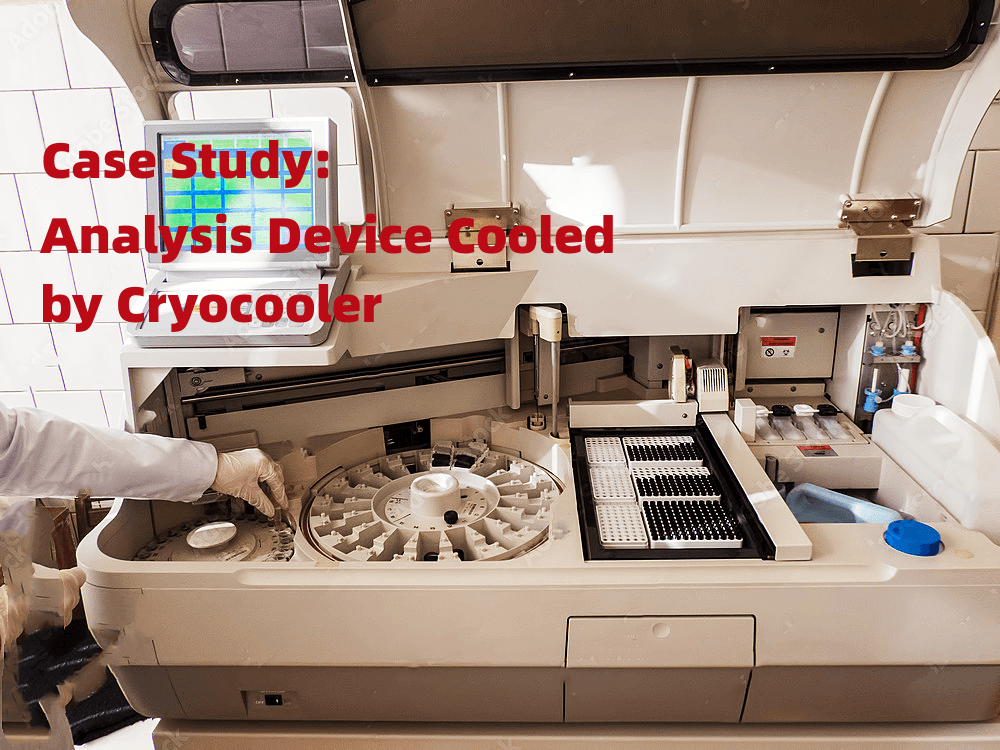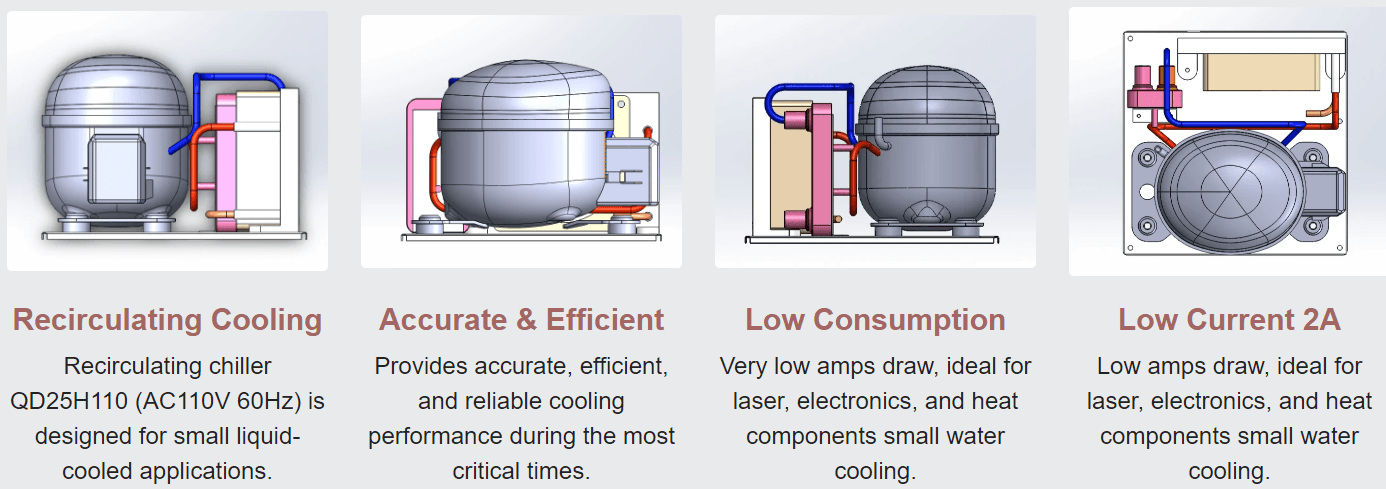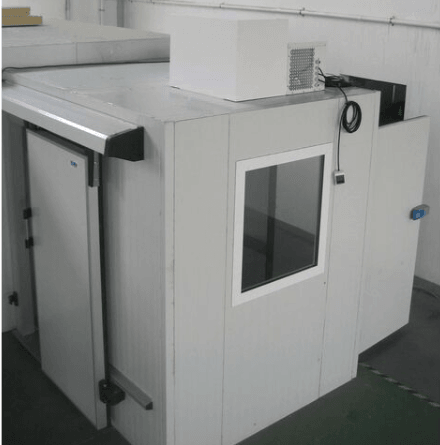Introduction

"Arctic Active Cooling. Endless Possibilities. We capture new technologies in mobile and compact cooling. Full-size cooling in a miniature design, customized to make your device stand out with innovative thermal management."
In the world of scientific research and experimentation, maintaining precise temperature control is paramount. This is where the laboratory chiller comes into play, serving as an essential tool for various applications. Understanding what a lab chiller is and its function can significantly enhance the efficiency of experiments and processes in any laboratory setting.
Understanding the Importance of Laboratory Chillers
Laboratory chillers are crucial for ensuring that sensitive materials remain at optimal temperatures during experiments. They help prevent overheating, which can lead to unreliable results or even damage to valuable samples. By grasping their importance, researchers can better appreciate how these devices contribute to successful outcomes in their work.
Key Features to Look for in a Lab Chiller
When searching for a laboratory chiller, it's important to consider several key features that will suit your specific needs. Look for temperature stability, cooling capacity, and energy efficiency—these factors can greatly affect performance and cost-effectiveness over time. Additionally, understanding what are the three types of chillers available will help you make an informed decision when choosing the right unit.
Common Misconceptions About Chillers
Many people confuse laboratory chillers with standard refrigerators, assuming they serve the same purpose; however, this is far from the truth. While both devices cool substances, a lab chiller is specifically designed for precise temperature control required in scientific applications. Clearing up these misconceptions allows researchers to select appropriate equipment tailored to their unique requirements.
What is a Lab Chiller?

When diving into the world of temperature control in laboratories, the term laboratory chiller often comes up. But what is a lab chiller? Essentially, it’s a specialized cooling device designed to maintain specific temperatures for various laboratory applications. Its primary purpose is to ensure that samples, equipment, and processes remain at optimal temperatures for accurate results and reliable performance.
Definition and Purpose of a Laboratory Chiller
A laboratory chiller is an essential piece of equipment used to remove heat from substances or processes in scientific settings. The primary function of this device is to provide precise temperature control necessary for experiments, chemical reactions, and other laboratory activities. By maintaining stable temperatures, laboratory chillers play a crucial role in enhancing the quality of research outcomes and ensuring safety during operations.
Differences Between Chillers and Refrigerators
At first glance, one might think that chillers are just glorified refrigerators; however, there are significant differences between the two. While both devices cool items, refrigerators primarily preserve food at safe temperatures for consumption, whereas laboratory chillers are tailored for specific cooling applications within scientific environments. Furthermore, chillers can handle larger volumes of fluids and provide more precise temperature regulation than typical household refrigerators.
How Laboratory Chillers Improve Efficiency
Laboratory chillers contribute significantly to improving efficiency by providing consistent cooling that enhances process reliability. When experiments require strict temperature control—like those involving sensitive chemical reactions—a lab chiller ensures that conditions remain stable throughout the experiment's duration. This stability not only leads to reproducible results but also minimizes downtime caused by overheating or equipment failures.
What is the Function of a Chiller?

Laboratory chillers play a vital role in scientific research and industrial applications by providing precise temperature control. By maintaining optimal conditions, these devices ensure that experiments yield accurate and reliable results. Understanding what is the function of a chiller helps researchers select the right equipment for their specific needs.
Temperature Control in Laboratory Settings
Temperature control is crucial in laboratory settings, where even slight fluctuations can lead to significant variations in experimental outcomes. A laboratory chiller provides consistent cooling, allowing scientists to maintain specific temperatures required for various processes and reactions. This level of stability not only enhances the quality of results but also ensures compliance with regulatory standards.
Maintaining an ideal temperature range is essential for sensitive materials, such as biological samples or chemical reagents. Without proper temperature regulation, these substances may degrade or react unpredictably, compromising research integrity. Therefore, understanding how to effectively use a lab chiller can be the difference between success and failure in experimental work.
Process Cooling Applications
In addition to temperature control, laboratory chillers serve multiple process cooling applications across various industries. For example, they are commonly used in analytical chemistry labs to cool reaction vessels during exothermic reactions or to maintain optimal conditions for chromatography processes. The versatility of a laboratory recirculating chiller makes it indispensable for many scientific operations.
Moreover, chillers are essential in manufacturing settings where heat generated during production must be dissipated quickly to prevent equipment damage or product spoilage. In pharmaceuticals and biotechnology sectors, consistent cooling ensures that sensitive compounds remain stable throughout processing stages. Thus, understanding what are the three types of chillers can help users select the most appropriate system for their specific process cooling needs.
Enhancing Experiment Reliability and Reproducibility
The reliability and reproducibility of experiments hinge on maintaining controlled conditions throughout testing phases—this is where laboratory chillers come into play! By ensuring stable temperatures over time, these devices enhance experiment reliability by minimizing variables that could skew results. Researchers who understand what temperature should a laboratory chiller be set at can fine-tune their experiments for maximum accuracy.
Furthermore, reproducibility is critical in scientific research; being able to replicate results under identical conditions confirms findings and builds credibility within the scientific community. A well-functioning lab chiller contributes significantly to this aspect by consistently delivering precise thermal environments across multiple trials or studies over time. Consequently, collaborating with reputable laboratory chiller manufacturers ensures access to high-quality devices designed specifically for rigorous research demands.
What Are the Three Types of Chillers?

When it comes to laboratory chillers, understanding the different types can help you choose the right one for your specific needs. Each type of chiller serves unique functions and applications, making them essential for various laboratory processes. In this section, we will explore the three primary types of chillers: recirculating chillers, vapor compression chillers, and absorption chillers.
Recirculating Chillers Explained
A laboratory recirculating chiller is designed to provide precise temperature control by circulating coolant through a closed-loop system. This type of chiller is particularly advantageous in laboratories that require consistent cooling for sensitive equipment or processes. With the ability to maintain stable temperatures, recirculating chillers enhance reliability in experiments and contribute to improved overall efficiency.
In addition to their temperature precision, laboratory recirculating chillers are often equipped with features such as digital displays and adjustable flow rates. These features allow researchers to fine-tune their cooling requirements based on specific applications. Whether you're working with lasers or analytical instruments, a recirculating chiller can be an invaluable asset for any lab setting.
Vapor Compression Chillers Overview
Vapor compression chillers operate on a refrigeration cycle that involves compressing refrigerant vapor and then allowing it to condense into a liquid state before evaporating again in a controlled manner. This continuous cycle enables these chillers to achieve lower temperatures efficiently and effectively—perfect for demanding laboratory environments where precision is paramount.
These chillers are known for their energy efficiency and reliability, making them suitable choices for various applications within laboratories. Additionally, vapor compression chillers can be scaled up or down depending on cooling needs, which makes them versatile options when considering what temperature should a laboratory chiller be set at during experiments or processes.
Absorption Chillers and Their Applications
Absorption chillers utilize heat instead of electricity as their primary energy source—making them an eco-friendly option in some cases. These systems work by using a refrigerant absorbed into a solution; when heat is applied to this solution, it separates the refrigerant from the absorbent material, allowing it to evaporate and create cooling effects in your lab space.
Absorption chillers are particularly effective in settings where waste heat is available—for example, from industrial processes—or where electricity costs are high. Though less common than other types of laboratory chillers due to size and complexity considerations, they offer unique advantages that can make them ideal solutions depending on specific operational needs within your facility.
What Temperature Should a Laboratory Chiller Be?

When it comes to laboratory chillers, temperature settings are crucial for ensuring optimal performance. A laboratory chiller is designed to maintain specific temperatures, which can vary depending on the application and materials being used. Understanding what temperature a laboratory chiller should be set at can significantly impact experimental outcomes and equipment longevity.
Optimal Temperature Ranges for Different Applications
Different applications require different optimal temperature ranges for laboratory chillers. For instance, biological samples often need to be kept at temperatures between 4°C and -20°C to preserve their integrity, while chemical processes may require even lower temperatures of -80°C or below. Knowing these ranges helps you choose the right laboratory recirculating chiller that meets your specific needs.
In addition, certain experiments may demand precise temperature control within narrow limits to ensure reproducibility and reliability of results. This is where selecting the right type of lab chiller becomes essential; whether it's a vapor compression or absorption chiller can make all the difference in achieving those desired conditions. Therefore, understanding what temperature a laboratory chiller should be set at is not just a matter of preference but one of necessity.
Factors Affecting Temperature Settings
Several factors can influence the ideal temperature settings for your laboratory chiller. First and foremost, the nature of the materials being chilled plays a significant role; some substances may have unique thermal properties that require specific cooling conditions. Additionally, ambient room temperature can affect how well your lab chiller operates; if your lab is particularly warm or cold, adjustments may be necessary.
Another consideration is the duration for which samples will be stored in the chiller; short-term storage might allow for slightly less stringent controls compared to long-term preservation needs. Regular maintenance also impacts performance—if a unit isn’t functioning optimally due to wear or lack of servicing, it might struggle to maintain desired temperatures effectively. Thus, understanding these factors will guide you in setting up your laboratory chiller correctly.
Importance of Temperature Stability
Temperature stability is paramount when using any type of lab chiller; fluctuations can lead to compromised samples and unreliable results in experiments. A stable environment helps ensure that reactions proceed as expected without unexpected variables introduced by changing temperatures. This consistency builds trust in experimental data—after all, who wants their findings questioned due to preventable errors?
Moreover, many high-precision applications rely on exacting standards that only stable temperatures can provide—think about sensitive biochemical assays or delicate electronic components needing cooling! Investing in reliable technology from reputable laboratory chiller manufacturers ensures you get equipment designed with stability in mind from day one. If you're on the hunt for a top-notch laboratory chiller for sale, look out specifically for models known for their temperature stability features.
Choosing the Right Laboratory Chiller Manufacturers

Selecting the right laboratory chiller manufacturers can significantly impact the efficiency and reliability of your research. With numerous options available, understanding which companies lead the market is crucial for making an informed decision. It’s not just about finding any laboratory chiller for sale; it’s about ensuring you choose a reputable manufacturer that meets your specific needs.
Leading Companies in the Market
When it comes to laboratory chillers, several companies stand out due to their innovation and quality. Brands like Thermo Fisher Scientific, Julabo, and PolyScience have established themselves as leaders in providing reliable laboratory recirculating chillers that cater to various applications. These manufacturers offer a range of products designed to meet different temperature control requirements, ensuring you find what is needed for your lab environment.
In addition to these well-known names, there are emerging players in the market that specialize in custom solutions for unique cooling challenges. Companies such as ARCTIC are gaining recognition for their tailored approach and commitment to customer satisfaction. With so many options available, it’s essential to research each company thoroughly before making a purchase.
Evaluating Manufacturer Reputation and Support
Evaluating manufacturer reputation is key when selecting a laboratory chiller manufacturer. Look for reviews from other researchers or institutions that have used their products; this can provide insights into reliability and performance over time. Consider factors such as warranty offerings, customer service responsiveness, and technical support availability—these aspects often reveal how much a manufacturer values its customers.
Moreover, attending industry trade shows or conferences can be beneficial in gauging a manufacturer's reputation firsthand through interactions with representatives and existing customers alike. Understanding what others say about their experiences can help you avoid potential pitfalls when choosing between different laboratory chillers on the market today.
Custom Solutions Offered by ARCTIC
ARCTIC has distinguished itself by offering custom solutions tailored specifically for diverse laboratory needs, setting them apart from traditional manufacturers of standard models like vapor compression chillers or absorption chillers. Their expertise allows them to design systems that fit unique specifications while maintaining optimal performance levels across various applications—whether it's process cooling or temperature control in sensitive experiments.
By focusing on both functionality and user requirements, ARCTIC ensures that every client receives a solution suited to their specific operational demands rather than settling for one-size-fits-all products. This dedication not only enhances experiment reliability but also maximizes efficiency within your lab environment—making them an excellent choice when considering which laboratory chiller manufacturers might be right for you.
Conclusion

In conclusion, selecting the right laboratory chiller is critical for ensuring optimal performance in various lab applications. Understanding the nuances of what a lab chiller is, its function, and the different types available can significantly influence your research outcomes. With the right knowledge, you can choose a laboratory chiller that meets your specific needs and enhances your experimental reliability.
Key Takeaways on Choosing a Lab Chiller
When choosing a lab chiller, it's essential to consider factors such as temperature control capabilities and energy efficiency. Knowing what temperature a laboratory chiller should be set at for your specific applications will help maintain the integrity of sensitive experiments. Additionally, understanding the differences between chillers and other cooling systems will enable you to make an informed decision that aligns with your laboratory's requirements.
Benefits of Understanding Chiller Types
Understanding what are the three types of chillers—recirculating chillers, vapor compression chillers, and absorption chillers—can guide you in selecting the most suitable option for your lab's unique processes. Each type serves distinct purposes and offers varying efficiencies depending on application needs; thus, knowing their characteristics can enhance operational effectiveness. Ultimately, this knowledge not only aids in efficient cooling but also contributes to better experimental results by ensuring precise temperature control.
Where to Find Laboratory Chillers for Sale
If you're in search of a reliable laboratory chiller for sale, numerous manufacturers specialize in high-quality options tailored to diverse research needs. Leading companies often provide comprehensive support and custom solutions to fit specific requirements—making it easier than ever to find exactly what you need. Don't hesitate to explore reputable laboratory chiller manufacturers who can offer both standard models and bespoke solutions that align with your scientific endeavors.
